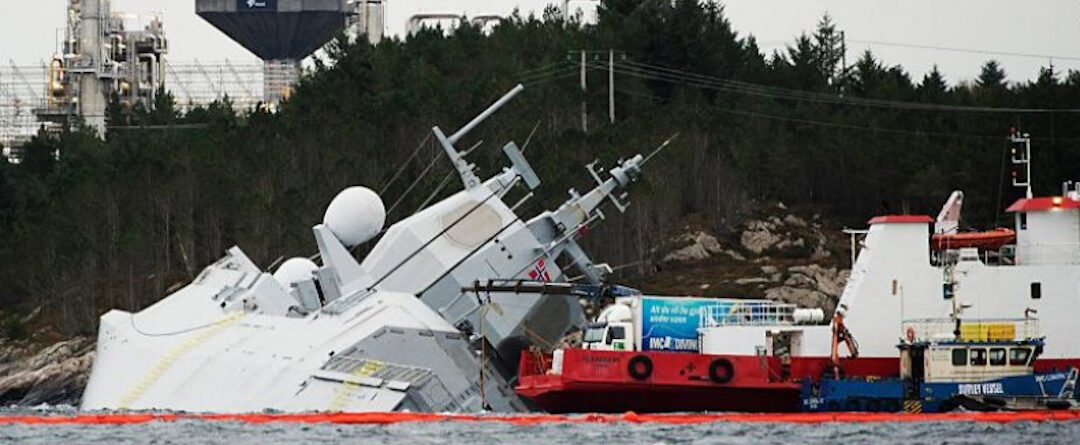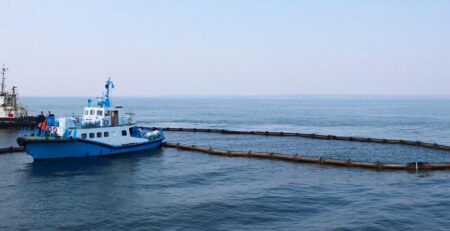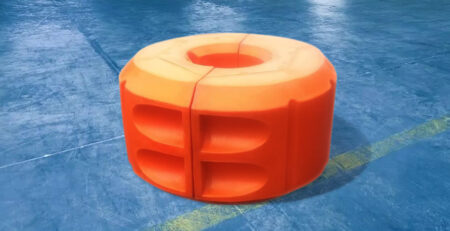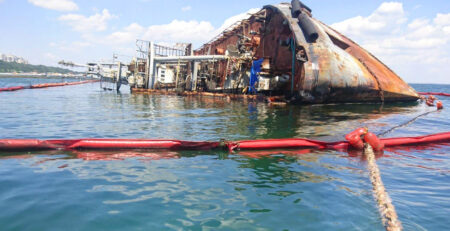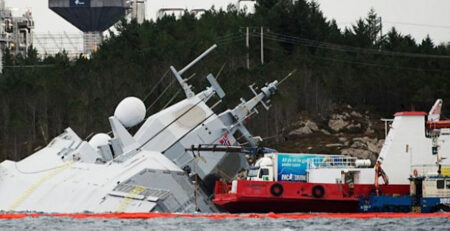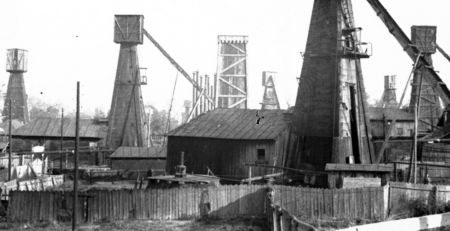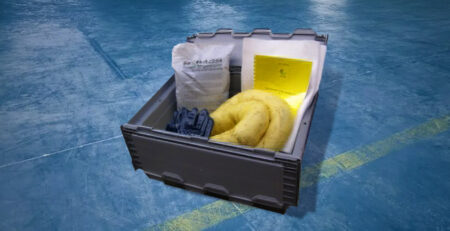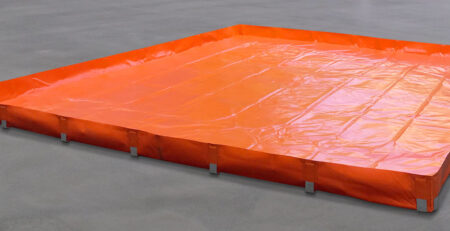International Regulations for Prevention Collisions at Sea PART D
International Regulations: Part D
Sound and light signals
Rule 32. DEFINITIONS
- a. The word “whistle” means any sound signaling device that can produce the prescribed sounds and meets the technical requirements listed in Appendix 3 to these Rules.
- b. The term “short sound” means a sound lasting approximately 1 second.
- c. The term “sustained sound” means a sound lasting 4 to 6 seconds.
Rule 33. SOUND-SIGNALING EQUIPMENT
- a. A ship of 12 meters or more in length shall be provided with a whistle and a bell and a ship of 100 meters or more in length shall, in addition, be provided with a gong, the tone and sound of which shall not be confused with that of the bell. The whistle, bell and gong shall comply with the requirements of Annex III to this Regulation. The bell and/or gong may be replaced by other devices having the same appropriate sound characteristics and it shall always be possible to give the prescribed signals manually.
- b. A ship of less than 12 meters in length is not required to have the sound-signaling devices prescribed in paragraph (a) of this Regulation, and if such a ship does not have them, it shall be provided with other means of giving an effective sound signal.
Rule 34. MANEUVERING AND WARNING SIGNALS
- a. When vessels are in sight of each other, a power-driven vessel under way, maneuvering as permitted by these Rules, shall indicate her maneuver by blowing whistle signals as follows:
- one short sound means “I am changing my course to starboard”;
- two short blasts means “I am changing my course to port”;
- Three short beeps means “My thrusters are in reverse.”
- b. A vessel may accompany the sound signals prescribed in paragraph (a) of this Rule with light signals repeated throughout the manoeuvre:
- i. these lights should have the following meaning: one flash means “I am changing my course
right”; two flashes mean “I am changing my course to port”; three flashes mean “My thrusters are in reverse”; - ii. the duration of each flash should be about 1 s, the interval between flashes should be about 1 s, the interval between successive signals should be at least 10 s;
- iii. the light used to give such a signal, if fitted, must be an all-round white light visible at a distance of at least 5 miles and must comply with the requirements of Annex I to these Regulations.
- i. these lights should have the following meaning: one flash means “I am changing my course
- c. When the ships are in sight of each other in a narrow passage or on the fairway, then:
- i. a vessel intending to overtake another vessel under Rule 9(e)(i) shall indicate her intention by the following whistle signals: two long blasts followed by one short blast, meaning “I intend to overtake you on your starboard side” , two long blasts and
followed by two short blasts meaning “I intend to overtake you on your port side”; - ii. a vessel about to be overtaken must, acting in accordance with Rule 9(e)(i), indicate her consent by blowing her whistle in the following order: one long, one short, one long and one short blast.
- i. a vessel intending to overtake another vessel under Rule 9(e)(i) shall indicate her intention by the following whistle signals: two long blasts followed by one short blast, meaning “I intend to overtake you on your starboard side” , two long blasts and
- d. When vessels in full view of each other approach and for any reason one of them is unable to understand the intentions or actions of the other vessel, or is in doubt as to whether the other vessel is taking sufficient action to avoid collision, it shall immediately report the matter. by giving at least five short and frequent whistle blows. Such a signal may be accompanied by a light signal consisting of at least five short and frequent flashes.
- e. A vessel approaching a bend or a section of a passage or fairway where other vessels may not be visible due to obstructions shall sound one continuous blast. Any approaching vessel within earshot of a bend or obstruction must respond to such a signal with a single continuous blast.
- f. If whistles are installed on the ship at a distance of more than 100 m from each other, then only one whistle should be used to give signals for maneuvering and warning.
Rule 35. AUDIBLE SIGNALS IN REDUCED VISIBILITY
- In or near restricted visibility areas, day or night, the signals prescribed by this Rule shall be given as follows.
- a. A power-driven vessel moving through the water shall sound one continuous blast at intervals of not more than 2 minutes.
- b. A power-driven vessel underway, but stopped and not moving in relation to the water, must give at intervals of not more than 2 minutes two long blasts with an interval of about 2 seconds between them.
- c. A vessel not under command or restricted in her ability to manoeuvre, a vessel constrained by her draft, a sailing vessel, a vessel engaged in fishing and a vessel towing or pushing another vessel shall, instead of the signals prescribed in paragraphs (a) and (b) of this Rule , give at intervals of no more than 2 minutes three consecutive sounds, namely, one long and after it two short ones.
- d. A vessel engaged in fishing at anchor and a vessel restricted in her ability to maneuver when carrying out her work at anchor shall, instead of the signals prescribed in paragraph (g) of this Rule, give a sound signal,
prescribed by paragraph (c) of this Rule. - e. The vessel being towed, and if more than one vessel is being towed, then the last of them, if there is a team on it, must, at intervals of not more than 2 minutes, give four consecutive sounds, namely, one long and three short ones after it. If possible, this signal should be given immediately after the signal of the towing vessel.
- f. When a pushing vessel and a vessel being pushed forward are rigidly connected to form an articulated vessel, they shall be treated as a power-driven vessel and shall give the signals prescribed in paragraphs (a) and (b) of this Rule.
- g. A vessel at anchor shall, at intervals of not more than 1 minute, ring the bell rapidly for approximately 5 seconds. On a vessel of 100 m or more in length, this bell signal shall be sounded at the bow and immediately followed at the stern by an accelerated gong for approximately 5 s. Vessel
at anchor, in order to warn approaching ships of their position and of the possibility of a collision, additionally give three consecutive blows with a whistle, namely one short, one
long and one short. - h. A vessel aground shall sound the bell and, if required, the gong, as prescribed in paragraph (g) of this Rule, and shall additionally sound three separate distinct strokes on the bell immediately before and after each rapid ringing of the bell. A ship aground may additionally serve
appropriate whistle signal. - i. A vessel less than 12 m in length is not required to give the above signals, but if she does not give them, she must give another effective sound signal at intervals of at least 2 minutes.
- j. A pilot ship, when in the exercise of her pilotage duties, in addition to the signals prescribed in paragraphs (a), (b) or (g) of this Rule, may sound an identification signal consisting of four short blasts.
Rule 36. ATTENTION SIGNALS
Any ship, when it is necessary to attract the attention of another ship, may give light or sound signals, but such as could not be mistaken for the signals laid down in these Rules, or may direct a searchlight beam in the direction of danger, but in such a way as not to interfere with other ships.
Any light used to attract the attention of another ship shall be such that it cannot be mistaken for any means of navigational equipment. For the purposes of this Regulation, the use of intermittent or rotating lights with high luminous intensity (such as pulse lights) shall be avoided.
Rule 37. DISTRESS SIGNALS
When a ship is in distress and requires assistance, she shall use or display the signals described in Annex IV to this Regulation.
International Regulations: Part E – https://econadin.com/en/international-regulations-for-preventing-collisions-at-sea-part-e/

